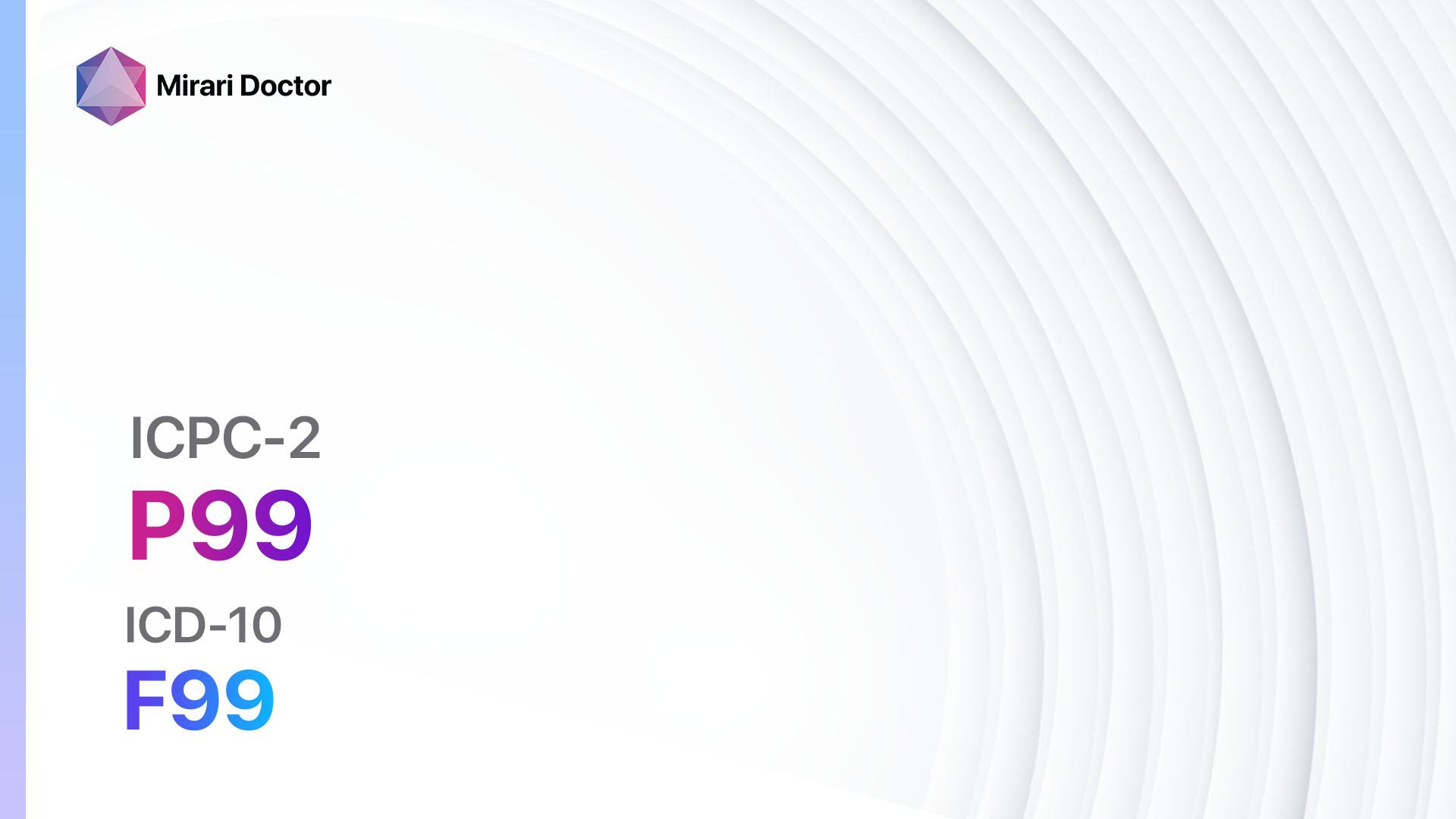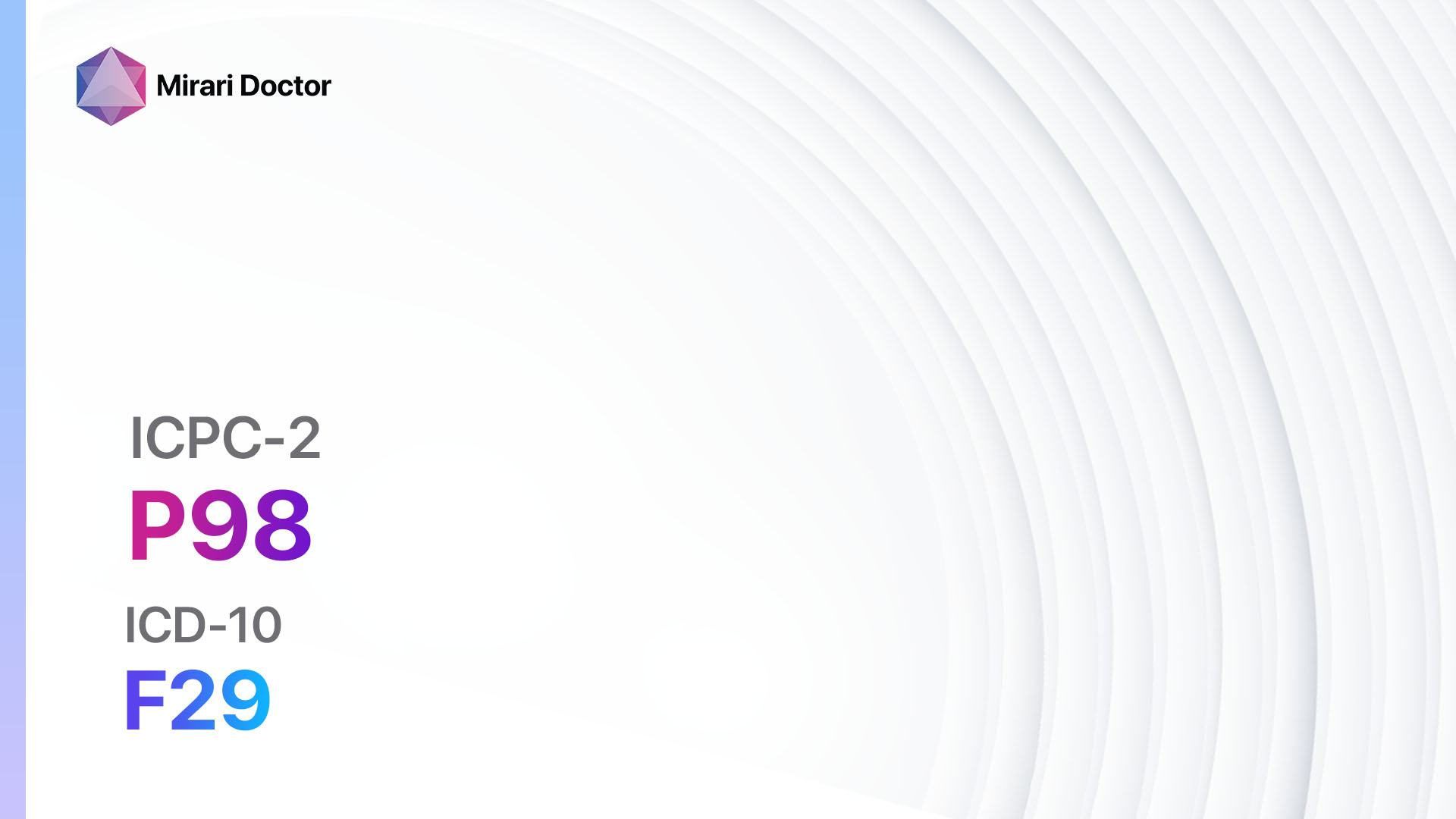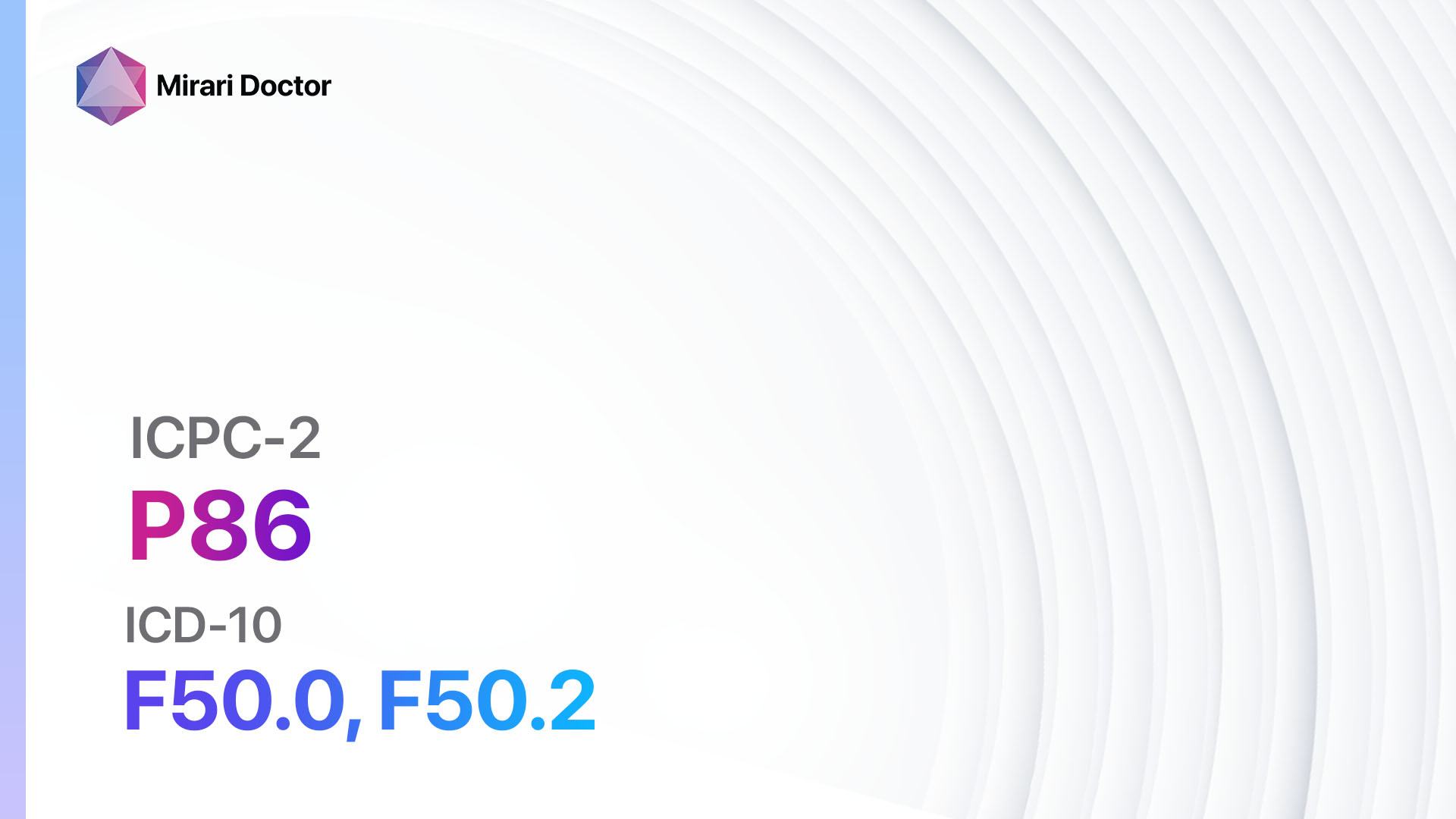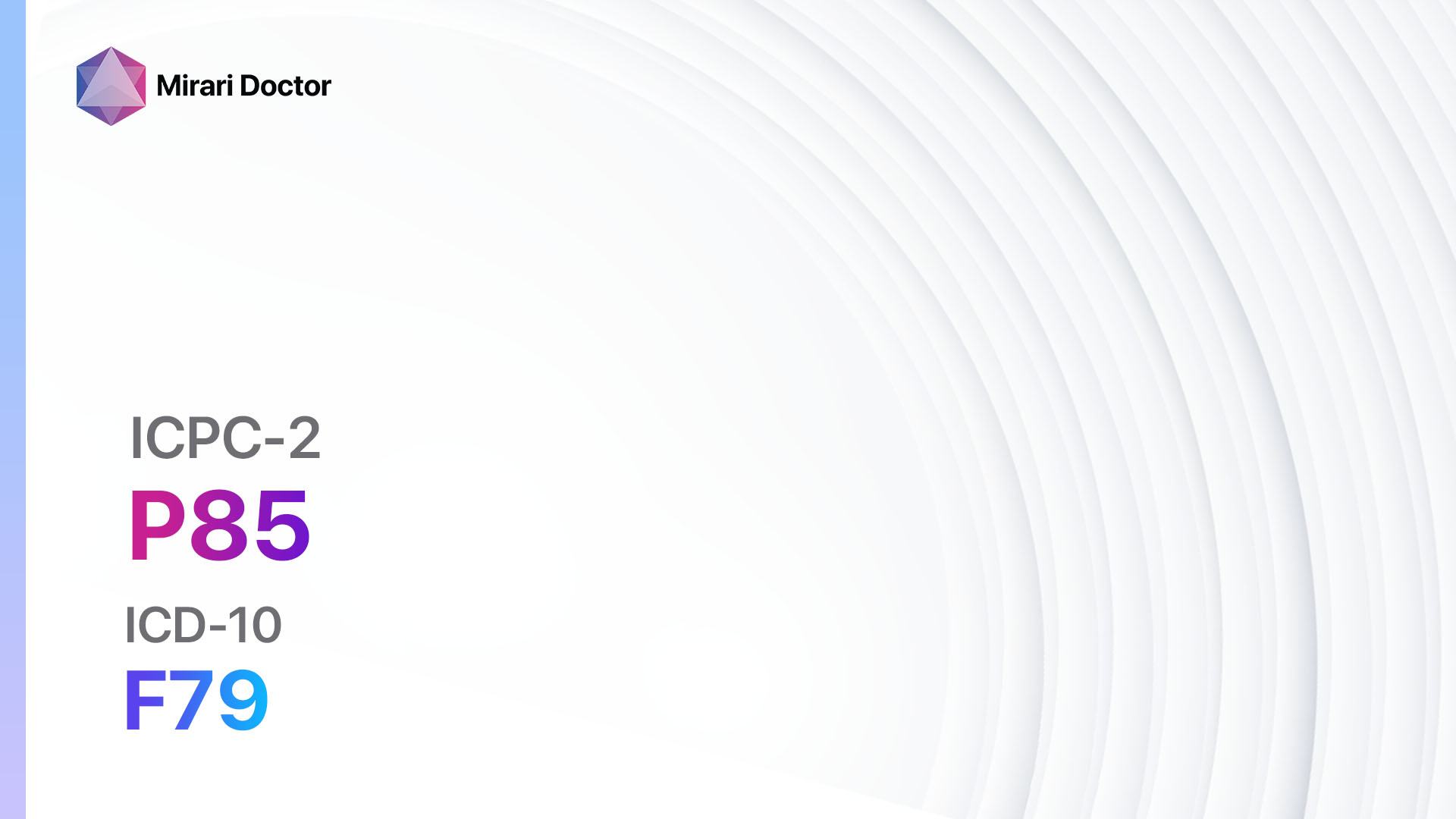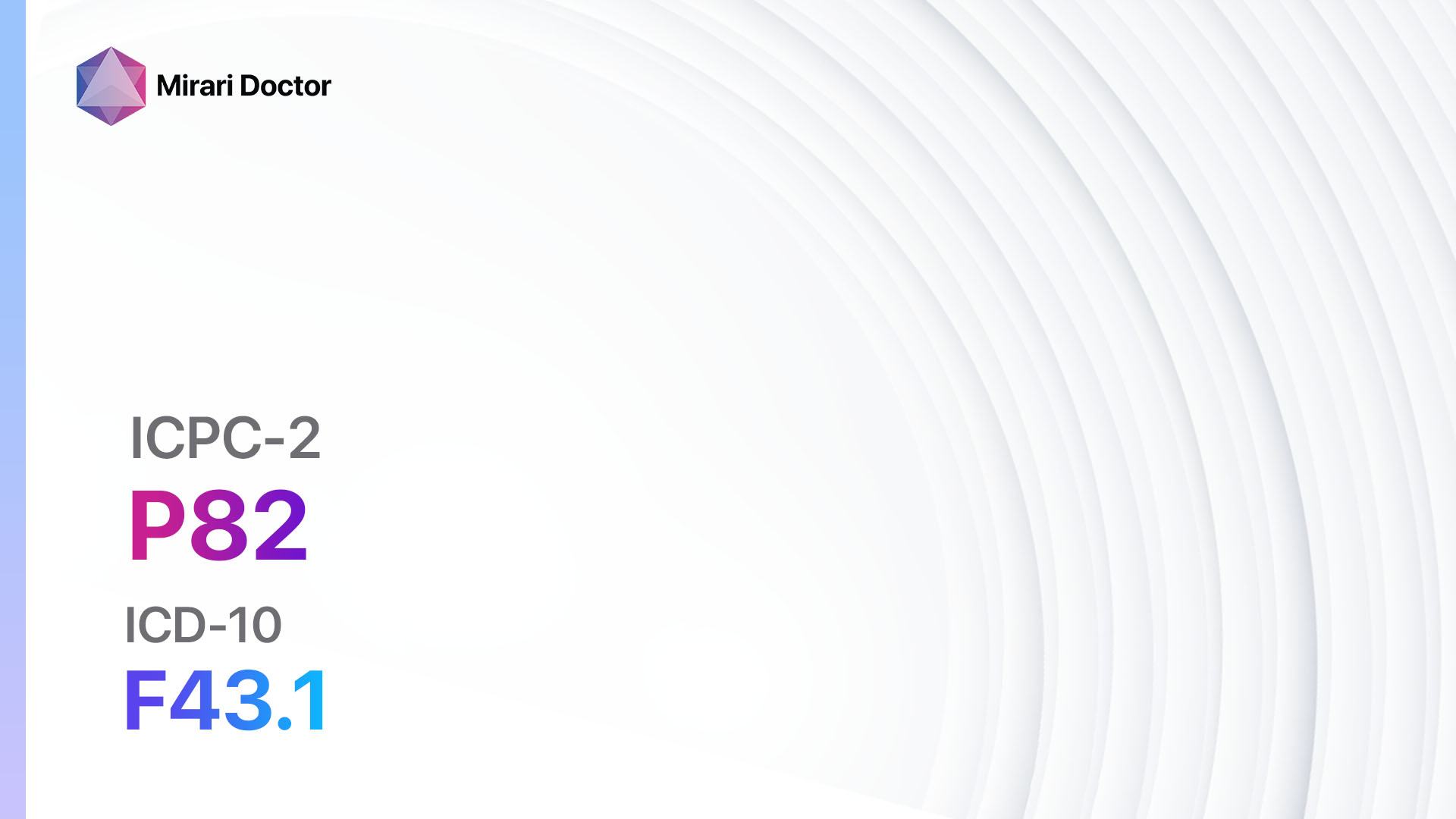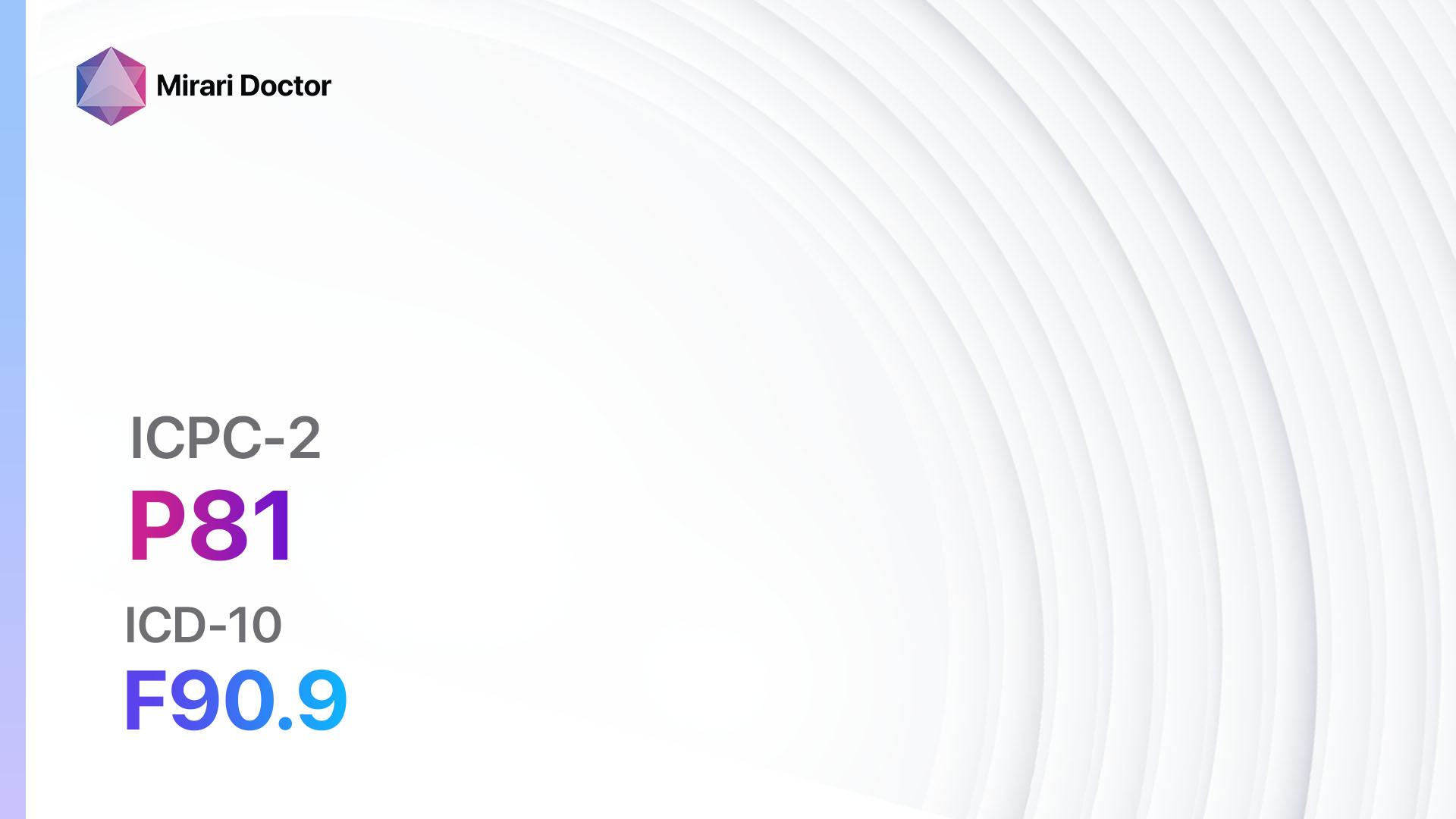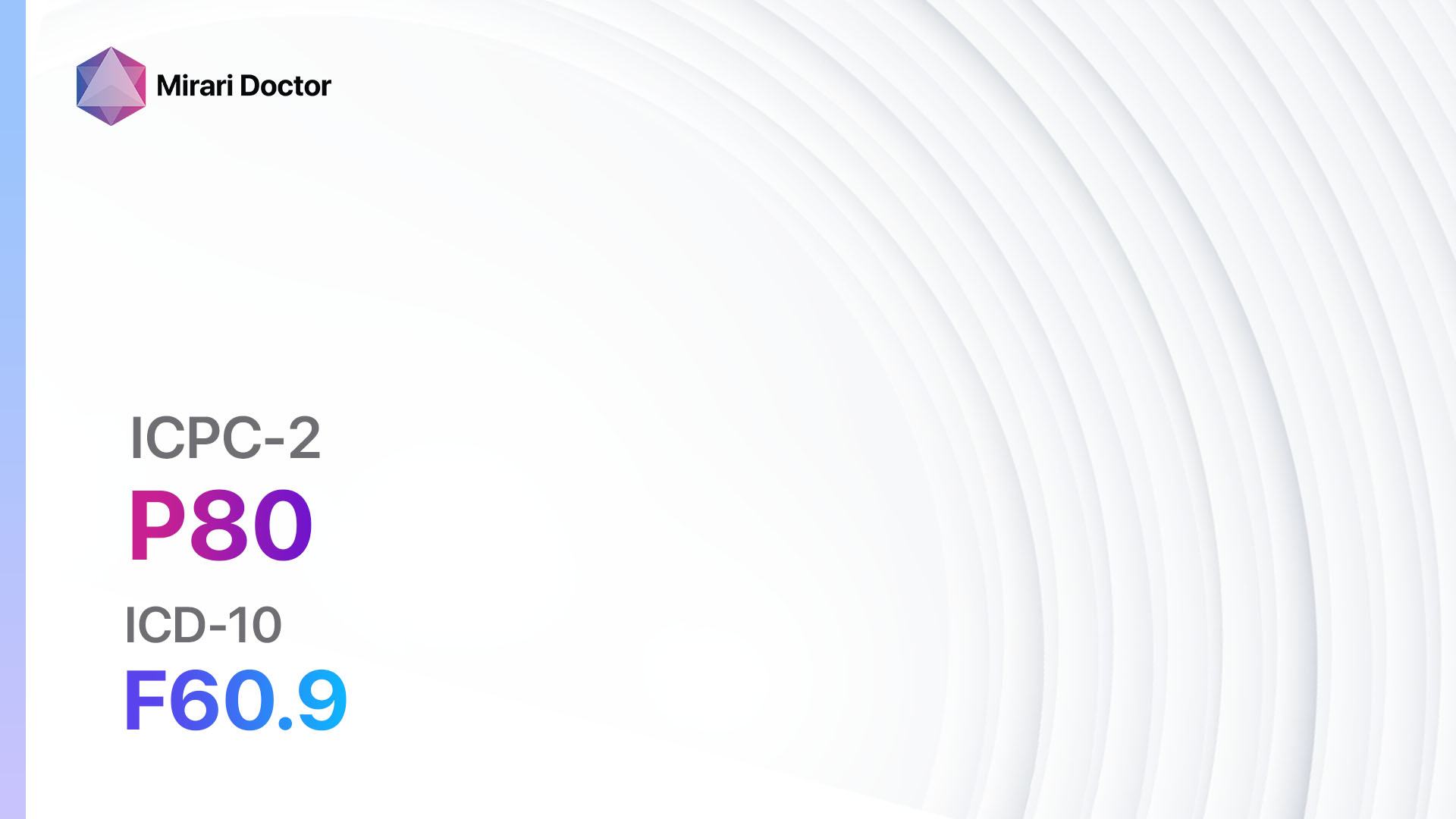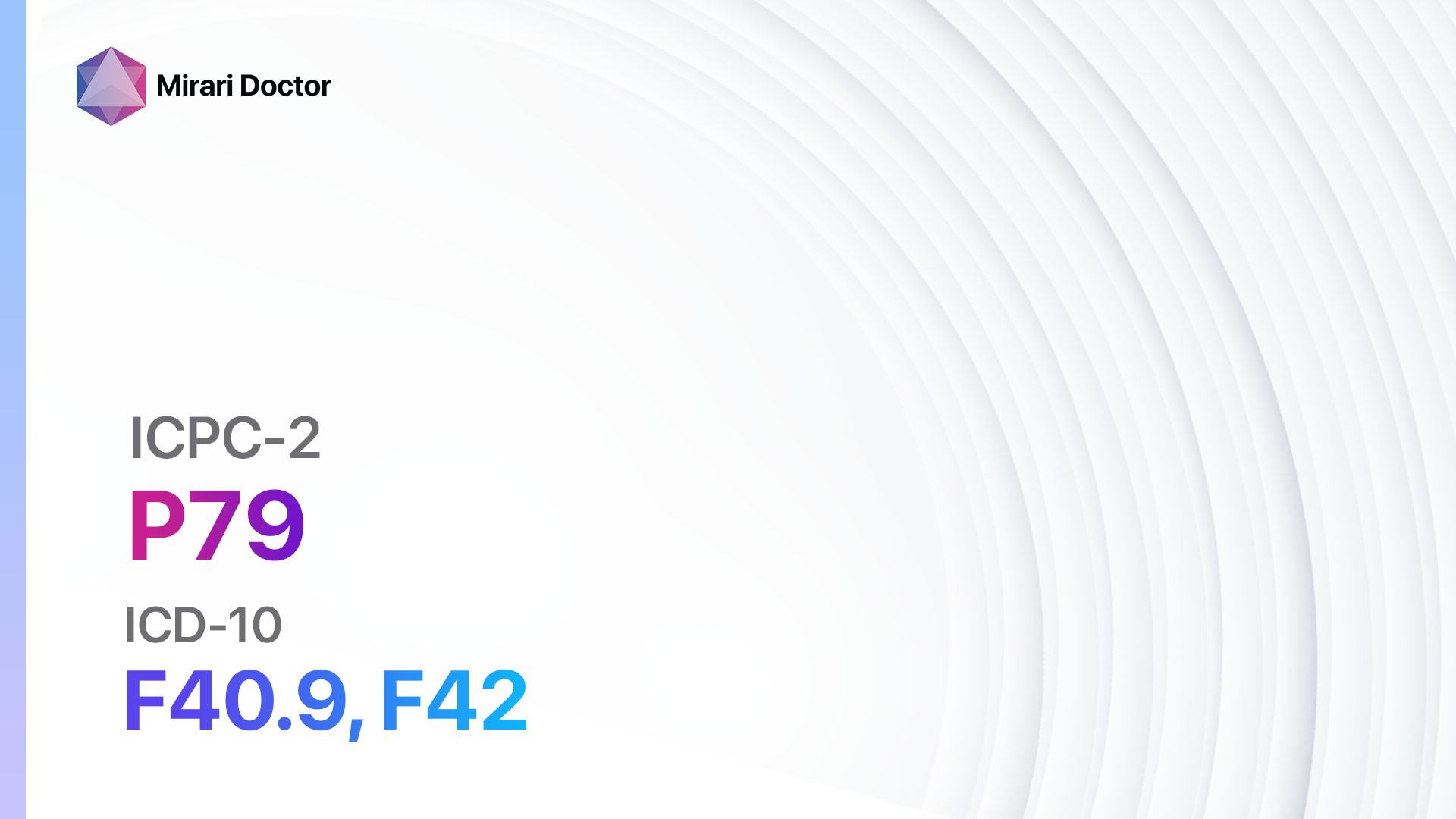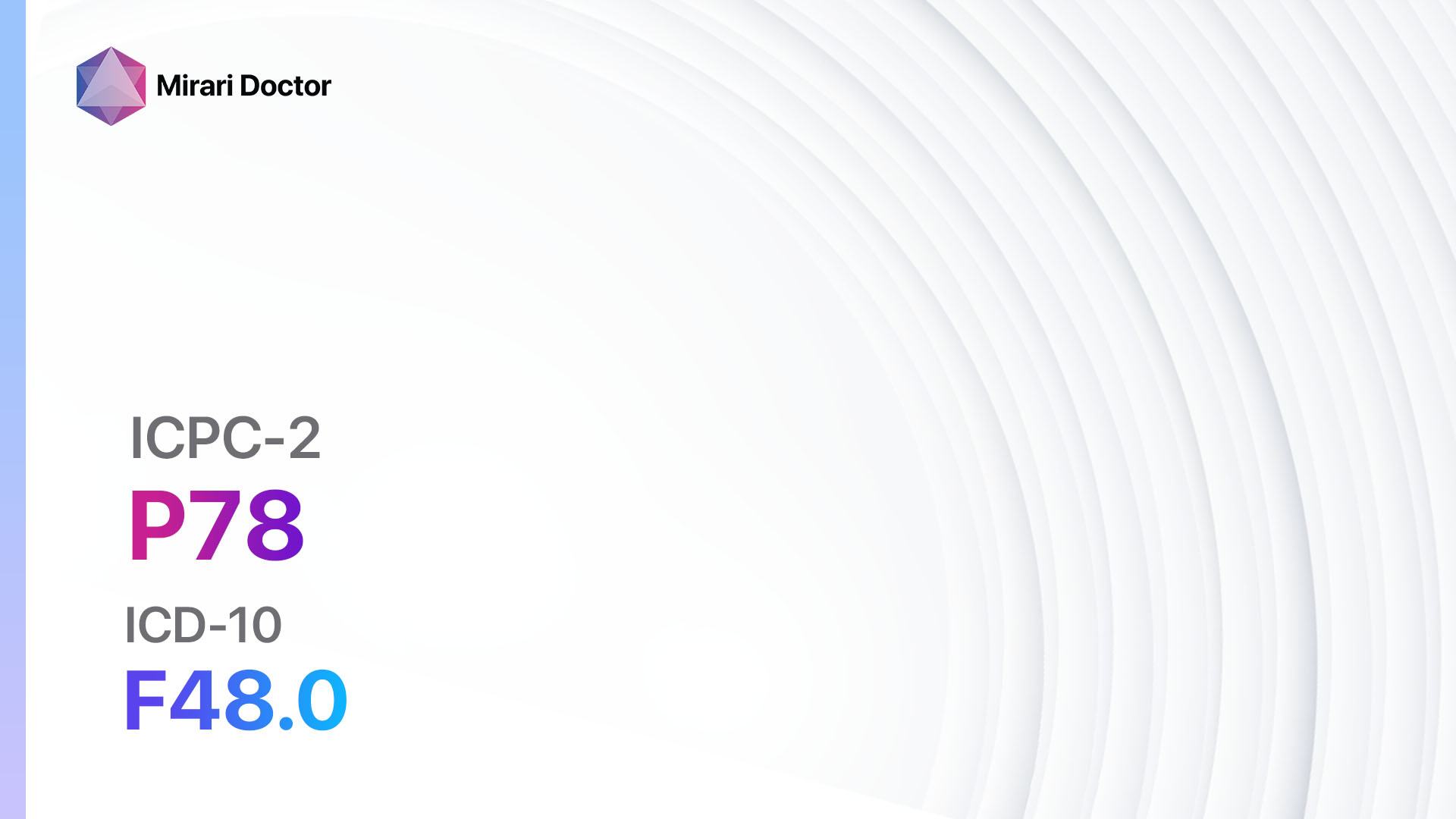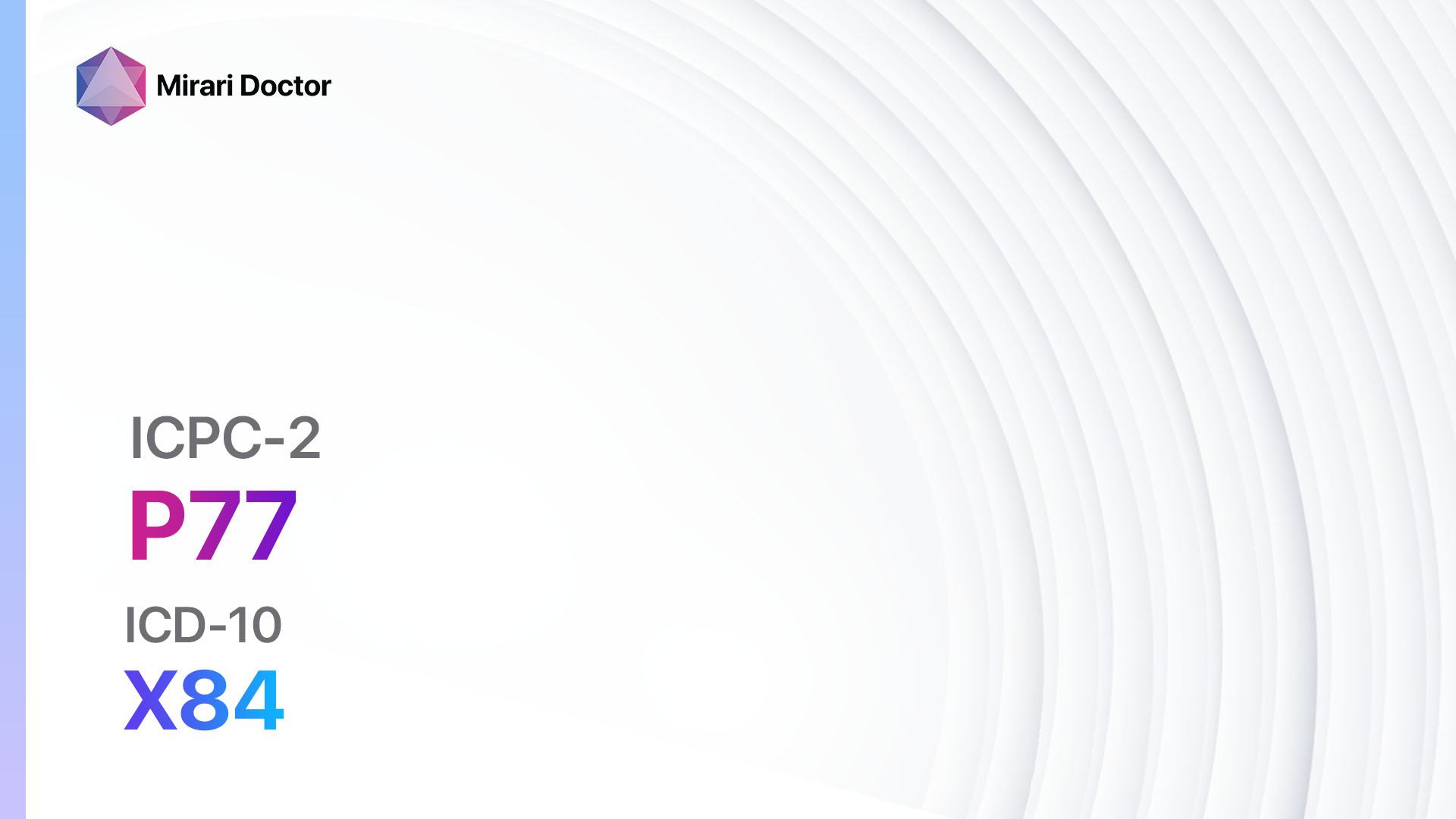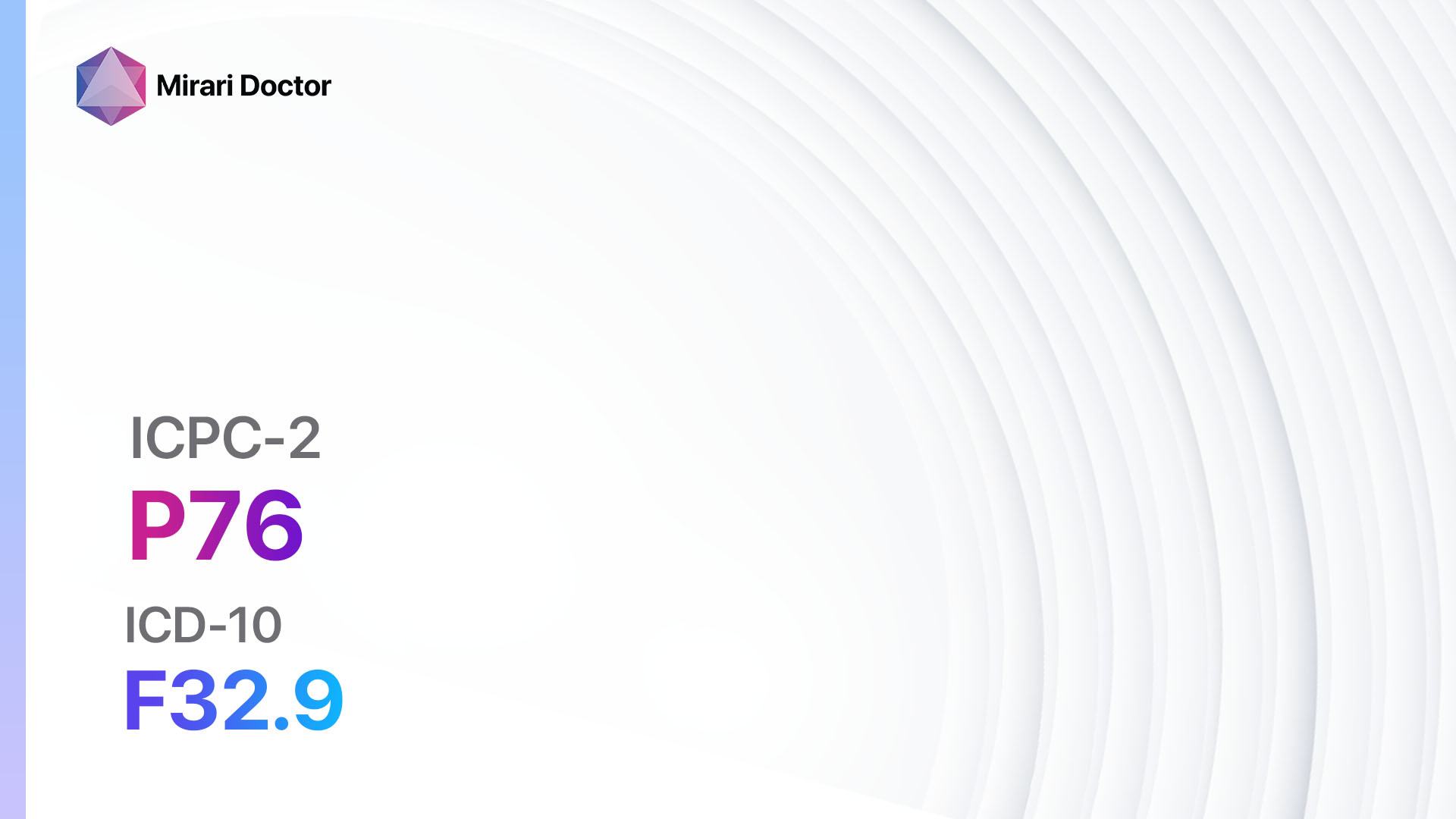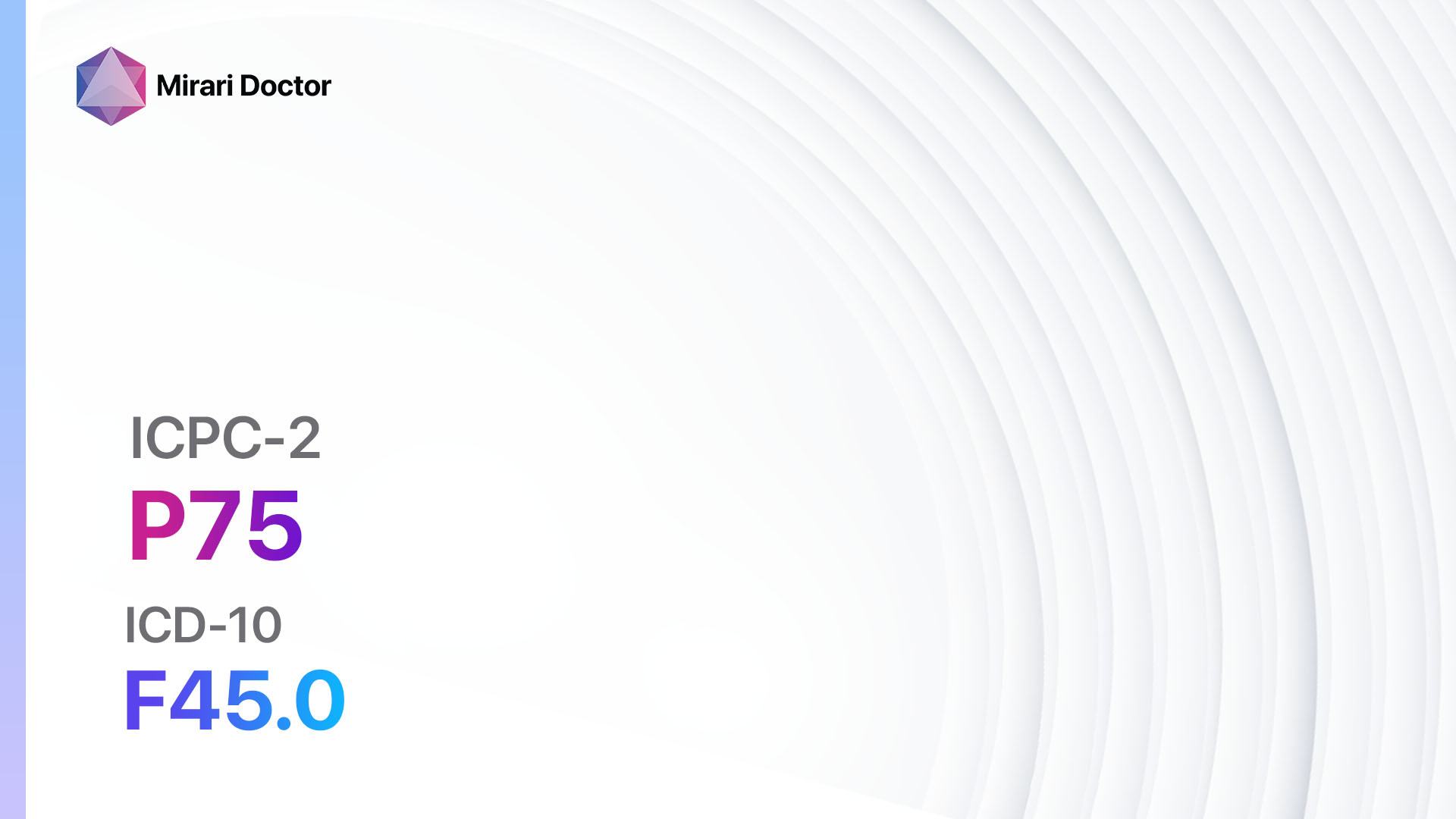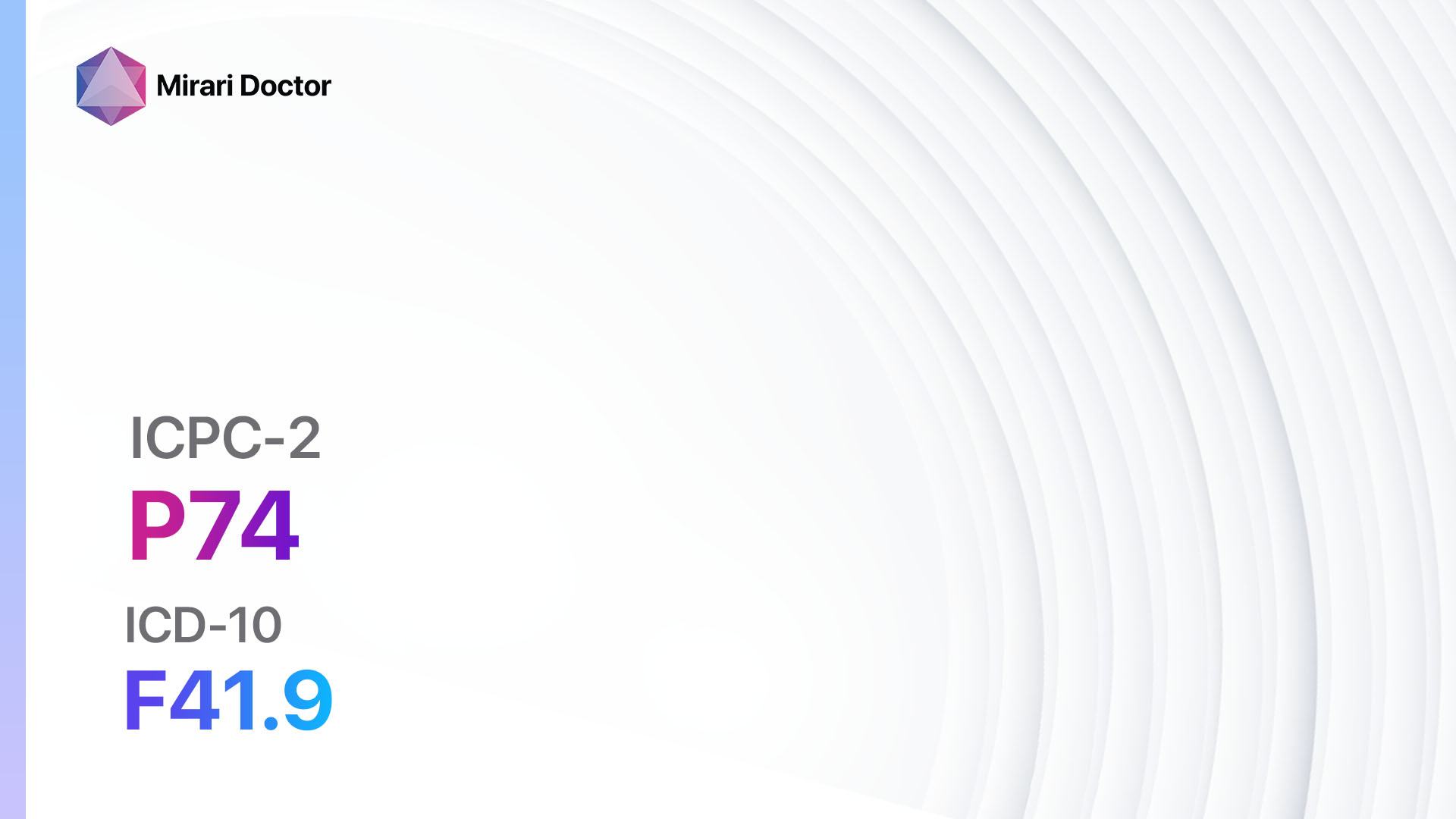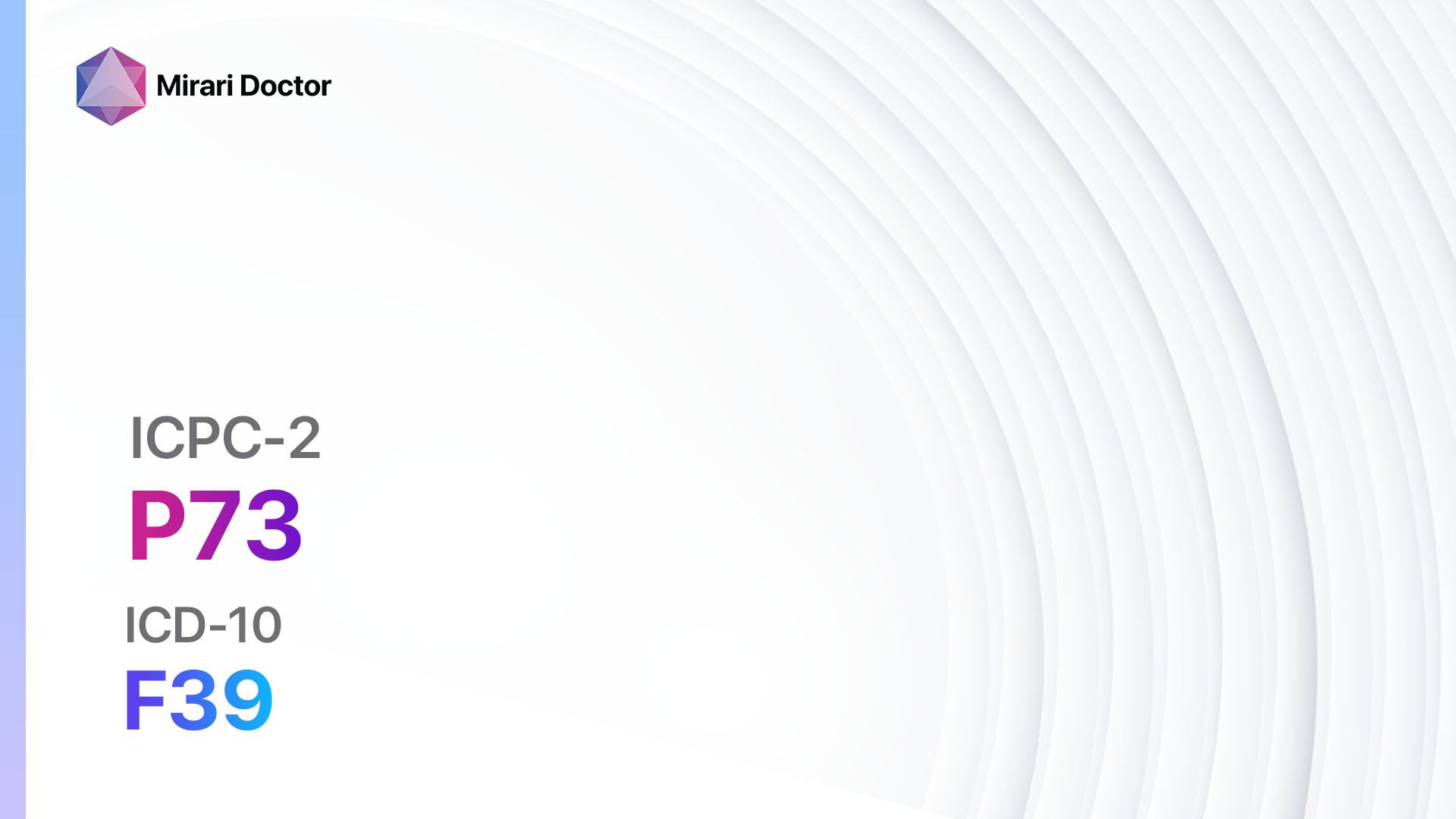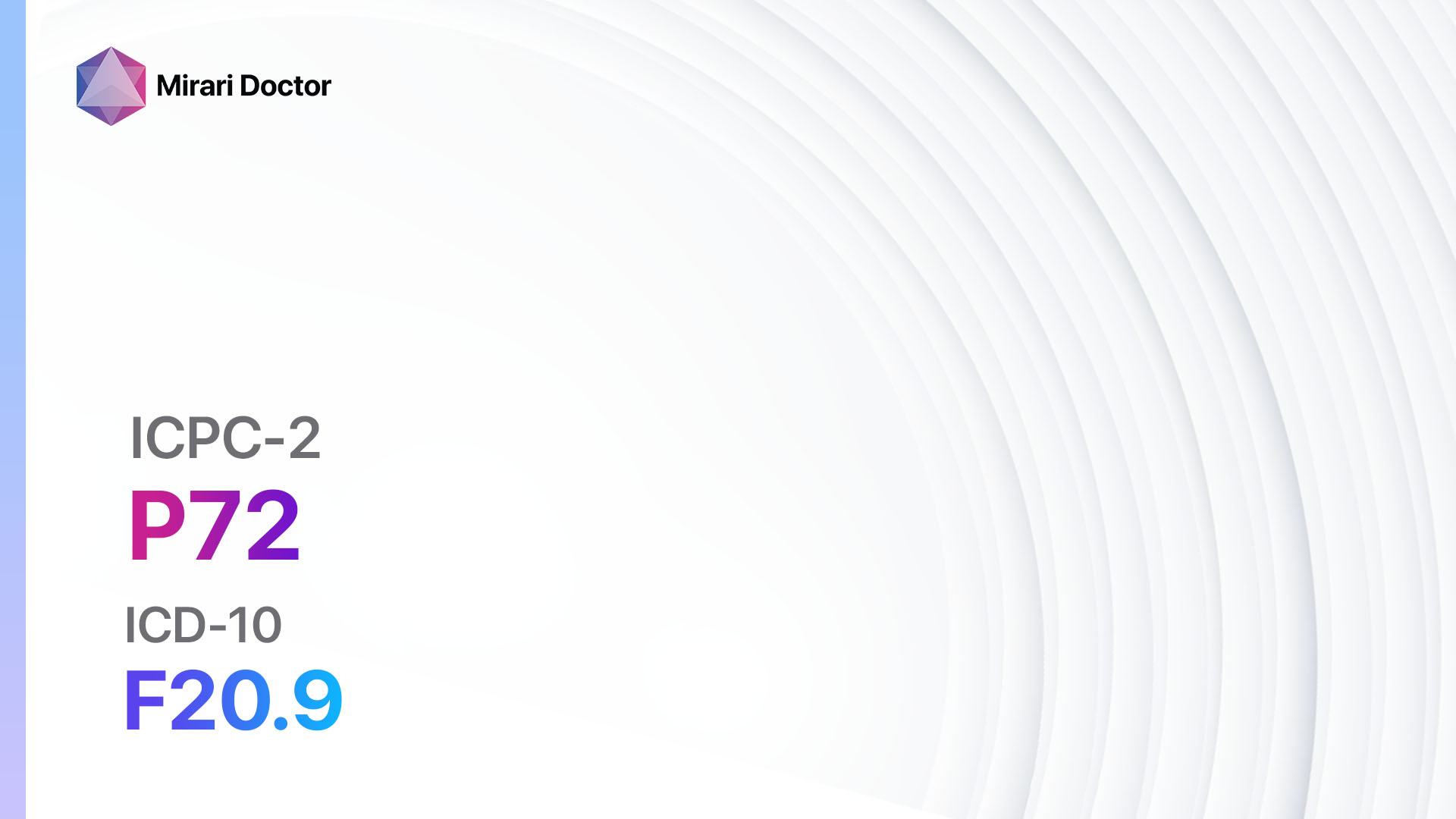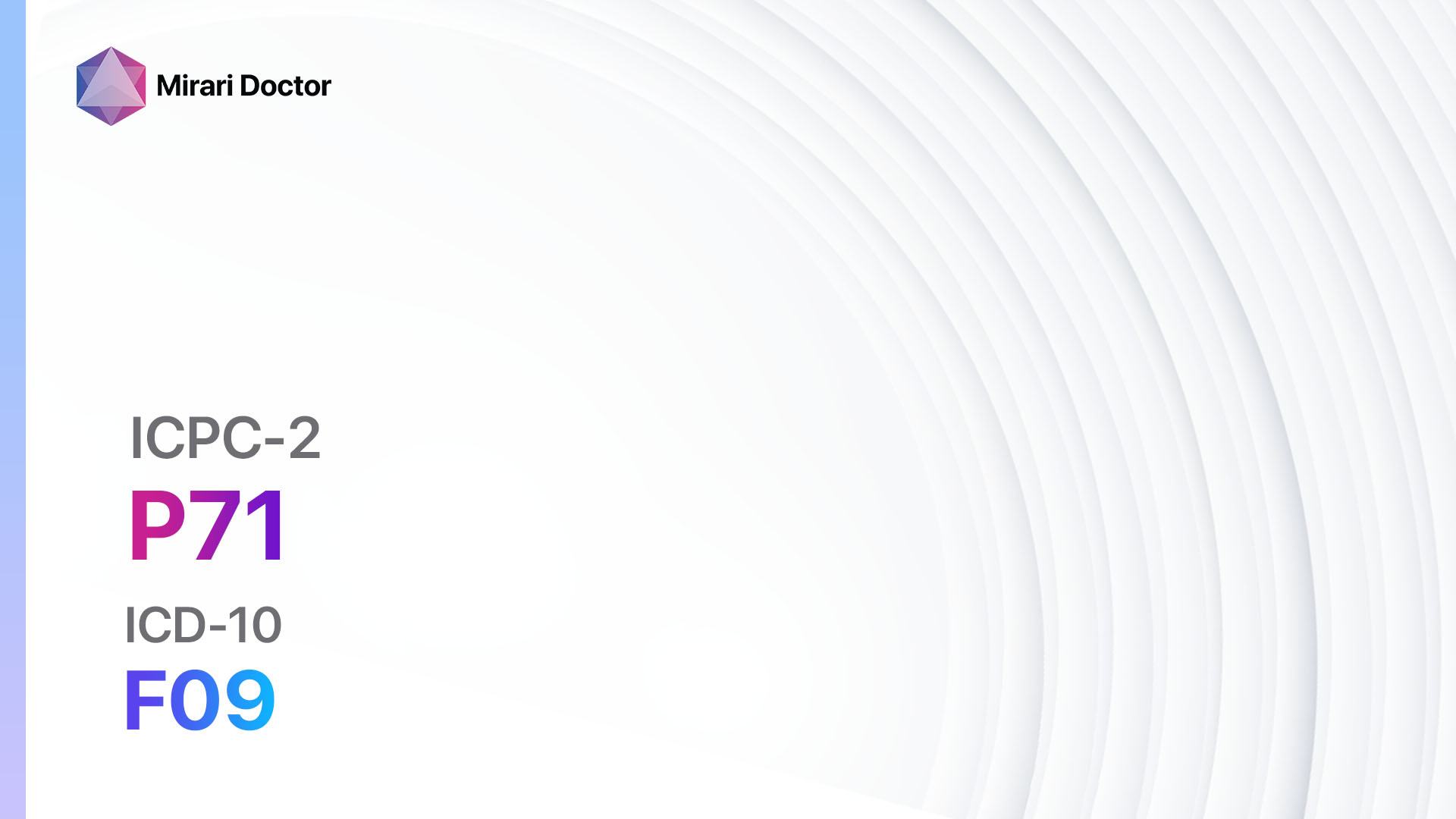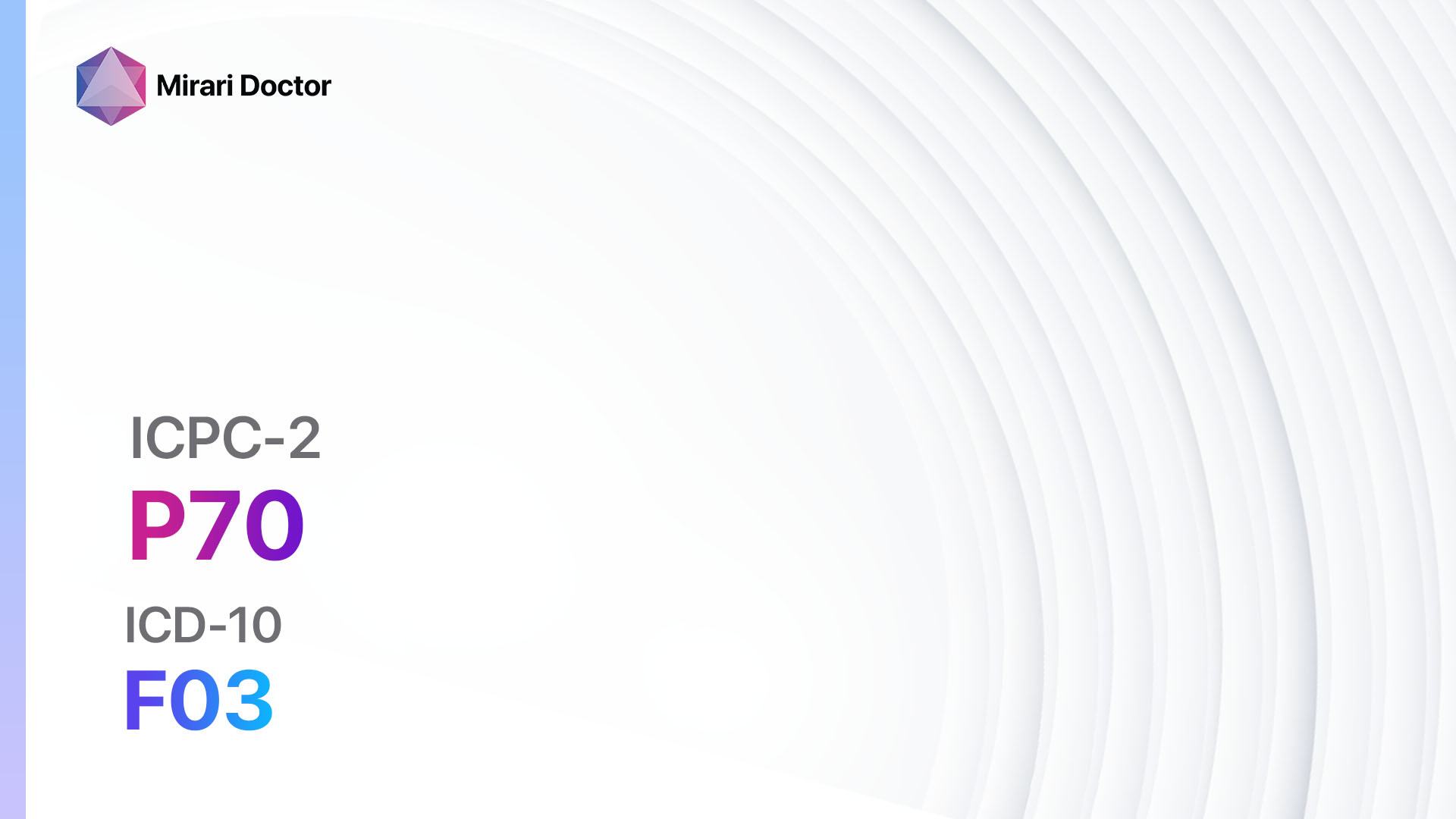
Introduction
Specific learning problem, also known as learning disability, refers to a neurological disorder that affects the brain’s ability to receive, process, store, and respond to information[1]. It is a significant condition as it can impact a person’s academic performance, social interactions, and overall quality of life[2]. The aim of this guide is to provide a comprehensive overview of specific learning problems, including symptoms, causes, diagnostic steps, possible interventions, and patient education.
Codes
- ICPC-2 Code: P24 Specific learning problem[3]
- ICD-10 Code: F81.9 Developmental disorder of scholastic skills, unspecified[4]
Symptoms
- Difficulty with reading, writing, or spelling[5]
- Problems with understanding and following instructions
- Challenges in organizing thoughts and ideas
- Poor memory and forgetfulness Difficulty with math calculations[6]
- Trouble with time management and organization
- Difficulty with problem-solving and critical thinking Low self-esteem and frustration related to academic performance[7]
Causes
- Genetic factors: Specific learning problems can run in families, suggesting a genetic component[8].
- Brain development and structure: Differences in brain structure and function can contribute to specific learning problems[9].
- Environmental factors: Exposure to toxins, prenatal drug or alcohol use, and complications during pregnancy or birth can increase the risk of specific learning problems[10].
- Neurological factors: Abnormalities in brain functioning, such as processing speed or information integration, can contribute to specific learning problems.
Diagnostic Steps
Medical History
- Gather information about the patient’s developmental milestones, academic performance, and any previous diagnoses or evaluations related to learning difficulties.
- Ask about family history of learning disabilities or other neurological disorders.
- Inquire about any prenatal or birth complications that may have occurred.
Physical Examination
- Conduct a thorough physical examination to rule out any underlying medical conditions that may be contributing to the learning difficulties.
- Assess vision and hearing to ensure that sensory impairments are not affecting learning.
Laboratory Tests
- There are no specific laboratory tests to diagnose specific learning problems. However, certain tests may be conducted to rule out other medical conditions that can mimic learning difficulties, such as thyroid disorders or lead poisoning.
Diagnostic Imaging
- Diagnostic imaging, such as MRI or CT scans, is not typically used in the diagnosis of specific learning problems. However, in some cases, imaging may be recommended to rule out any structural abnormalities in the brain.
Other Tests
- Psychoeducational assessments: These assessments involve a comprehensive evaluation of the individual’s cognitive abilities, academic skills, and social-emotional functioning. They can help identify specific learning difficulties and determine appropriate interventions.
Follow-up and Patient Education
- Provide the patient and their family with a clear understanding of the diagnosis and its implications.
- Offer resources and support for managing specific learning problems, such as educational accommodations, tutoring, and counseling services.
- Encourage open communication and collaboration between the patient, their family, and educators to ensure appropriate support and interventions are in place.
Possible Interventions
Traditional Interventions
Medications:
Top 5 drugs for Specific learning problem:
- Stimulant medications (e.g., Methylphenidate, Adderall):
- Cost: Generic versions can range from $20 to $100 per month.
- Contraindications: History of heart problems, high blood pressure, or glaucoma.
- Side effects: Decreased appetite, trouble sleeping, increased heart rate.
- Severe side effects: Psychiatric symptoms, cardiovascular problems.
- Drug interactions: Monoamine oxidase inhibitors (MAOIs), certain antidepressants.
- Warning: Regular monitoring of blood pressure and heart rate is required.
- Non-stimulant medications (e.g., Atomoxetine, Guanfacine):
- Cost: Generic versions can range from $50 to $150 per month.
- Contraindications: History of heart problems, liver disease, or narrow-angle glaucoma.
- Side effects: Upset stomach, drowsiness, dry mouth.
- Severe side effects: Suicidal thoughts, liver problems.
- Drug interactions: MAOIs, certain antidepressants.
- Warning: Regular monitoring of liver function is required.
- Antidepressants (e.g., Bupropion, Sertraline):
- Cost: Generic versions can range from $10 to $50 per month.
- Contraindications: History of seizures, eating disorders, or bipolar disorder.
- Side effects: Nausea, headache, insomnia.
- Severe side effects: Suicidal thoughts, serotonin syndrome.
- Drug interactions: MAOIs, certain antipsychotics.
- Warning: Regular monitoring for changes in mood and behavior is required.
- Antianxiety medications (e.g., Buspirone, Diazepam):
- Cost: Generic versions can range from $10 to $50 per month.
- Contraindications: History of substance abuse, glaucoma, or severe liver disease.
- Side effects: Drowsiness, dizziness, blurred vision.
- Severe side effects: Confusion, respiratory depression.
- Drug interactions: Sedatives, alcohol.
- Warning: May cause dependence and withdrawal symptoms with long-term use.
- Antipsychotic medications (e.g., Risperidone, Aripiprazole):
- Cost: Generic versions can range from $10 to $100 per month.
- Contraindications: History of heart problems, liver disease, or seizures.
- Side effects: Weight gain, drowsiness, restlessness.
- Severe side effects: Movement disorders, metabolic changes.
- Drug interactions: Other antipsychotics, certain antidepressants.
- Warning: Regular monitoring for changes in mood, behavior, and metabolic parameters is required.
Alternative Drugs:
- Nootropics (e.g., Piracetam): Cognitive-enhancing drugs that may improve memory and attention. Cost: $20-$50 per month.
- Omega-3 fatty acids: Some studies suggest that omega-3 supplements may have a positive impact on cognitive function. Cost: $10-$30 per month.
- Ginkgo biloba: An herbal supplement that may improve cognitive function and memory. Cost: $10-$20 per month.
- Bacopa monnieri: An herbal supplement that may enhance memory and learning. Cost: $10-$20 per month.
- L-theanine: An amino acid that may promote relaxation and improve focus. Cost: $10-$20 per month.
Behavioral Interventions:
- Cognitive-behavioral therapy (CBT): Helps individuals identify and change negative thoughts and behaviors related to learning difficulties. Cost: $100-$200 per session.
- Educational interventions: Specialized educational programs and accommodations can help individuals with specific learning problems succeed academically. Cost: Varies depending on the specific program or accommodations.
- Parent training and support: Provides parents with strategies and support to help their child manage specific learning problems. Cost: $50-$100 per session.
- Assistive technology: Tools and devices, such as text-to-speech software or graphic organizers, can assist individuals with specific learning problems in their academic tasks. Cost: Varies depending on the specific technology.
Alternative Interventions
- Neurofeedback: A technique that aims to train individuals to regulate their brainwave patterns, potentially improving attention and focus. Cost: $100-$200 per session.
- Mindfulness meditation: Helps individuals develop present-moment awareness and reduce stress. Cost: Varies (can be free or involve the cost of attending a meditation class).
- Yoga: Combines physical postures, breathing exercises, and meditation to promote relaxation and improve focus. Cost: $10-$20 per class.
- Art therapy: Engaging in creative activities can help individuals express themselves and improve self-esteem. Cost: $50-$100 per session.
- Music therapy: Using music to address emotional, cognitive, and social needs can be beneficial for individuals with specific learning problems. Cost: $50-$100 per session.
Lifestyle Interventions
- Regular exercise: Engaging in physical activity can improve cognitive function and reduce symptoms of specific learning problems. Cost: Varies (can be free or involve the cost of a gym membership or fitness classes).
- Healthy diet: Consuming a balanced diet rich in fruits, vegetables, whole grains, and lean proteins can support brain health and overall well-being. Cost: Varies depending on food choices.
- Sufficient sleep: Getting an adequate amount of sleep is essential for optimal cognitive function. Cost: Varies (no additional cost if maintaining regular sleep patterns).
- Stress management techniques: Learning and practicing stress management techniques, such as deep breathing exercises or mindfulness, can help reduce the impact of stress on learning. Cost: Varies (can be free or involve the cost of attending stress management classes or workshops).
- Time management and organization strategies: Developing effective strategies for managing time and organizing tasks can improve productivity and reduce stress. Cost: Varies (no additional cost if implementing personal strategies).
It is important to note that the cost ranges provided are approximate and may vary depending on the location and availability of the interventions.
Mirari Cold Plasma Alternative Intervention
Understanding Mirari Cold Plasma
- Safe and Non-Invasive Treatment: Mirari Cold Plasma is a safe and non-invasive treatment option for various skin conditions. It does not require incisions, minimizing the risk of scarring, bleeding, or tissue damage.
- Efficient Extraction of Foreign Bodies: Mirari Cold Plasma facilitates the removal of foreign bodies from the skin by degrading and dissociating organic matter, allowing easier access and extraction.
- Pain Reduction and Comfort: Mirari Cold Plasma has a local analgesic effect, providing pain relief during the treatment, making it more comfortable for the patient.
- Reduced Risk of Infection: Mirari Cold Plasma has antimicrobial properties, effectively killing bacteria and reducing the risk of infection.
- Accelerated Healing and Minimal Scarring: Mirari Cold Plasma stimulates wound healing and tissue regeneration, reducing healing time and minimizing the formation of scars.
Mirari Cold Plasma Prescription
Video instructions for using Mirari Cold Plasma Device – P24 Specific learning problem (ICD-10:F81.9)
| Mild | Moderate | Severe |
| Mode setting: 2 (Wound Healing) Location: 7 (Neuro system & ENT) Morning: 15 minutes, Evening: 15 minutes | Mode setting: 2 (Wound Healing) Location: 7 (Neuro system & ENT) Morning: 30 minutes, Lunch: 30 minutes, Evening: 30 minutes | Mode setting: 2 (Wound Healing) Location: 7 (Neuro system & ENT) Morning: 30 minutes, Lunch: 30 minutes, Evening: 30 minutes |
| Mode setting: 7 (Immunotherapy) Location: 1 (Sacrum) Morning: 15 minutes, Evening: 15 minutes | Mode setting: 7 (Immunotherapy) Location: 1 (Sacrum) Morning: 30 minutes, Lunch: 30 minutes, Evening: 30 minutes | Mode setting: 7 (Immunotherapy) Location: 1 (Sacrum) Morning: 30 minutes, Lunch: 30 minutes, Evening: 30 minutes |
| Mode setting: 7 (Immunotherapy) Location: 1 (Sacrum) Morning: 15 minutes, Evening: 15 minutes | Mode setting: 7 (Immunotherapy) Location: 1 (Sacrum) Morning: 30 minutes, Lunch: 30 minutes, Evening: 30 minutes | Mode setting: 7 (Immunotherapy) Location: 1 (Sacrum) Morning: 30 minutes, Lunch: 30 minutes, Evening: 30 minutes |
| Total Morning:45minutesapprox.$7.50USD, Evening:45minutesapprox.$7.50USD | Total Morning:90minutesapprox.$15USD, Lunch:90minutesapprox. $15 USD, Evening:90minutesapprox. $15 USD, | Total Morning:90minutesapprox.$15USD, Lunch:90minutesapprox. $15 USD, Evening:90minutesapprox. $15 USD, |
| Usualtreatmentfor7-60daysapprox.$105USD–$900USD | Usualtreatmentfor6-8weeksapprox.$1,890USD–$2,520USD | Usualtreatmentfor3-6monthsapprox.$4,050USD–$8,100USD |
 |
|
Use the Mirari Cold Plasma device to treat Specific learning problem effectively.
WARNING: MIRARI COLD PLASMA IS DESIGNED FOR THE HUMAN BODY WITHOUT ANY ARTIFICIAL OR THIRD PARTY PRODUCTS. USE OF OTHER PRODUCTS IN COMBINATION WITH MIRARI COLD PLASMA MAY CAUSE UNPREDICTABLE EFFECTS, HARM OR INJURY. PLEASE CONSULT A MEDICAL PROFESSIONAL BEFORE COMBINING ANY OTHER PRODUCTS WITH USE OF MIRARI.
Step 1: Cleanse the Skin
- Start by cleaning the affected area of the skin with a gentle cleanser or mild soap and water. Gently pat the area dry with a clean towel.
Step 2: Prepare the Mirari Cold Plasma device
- Ensure that the Mirari Cold Plasma device is fully charged or has fresh batteries as per the manufacturer’s instructions. Make sure the device is clean and in good working condition.
- Switch on the Mirari device using the power button or by following the specific instructions provided with the device.
- Some Mirari devices may have adjustable settings for intensity or treatment duration. Follow the manufacturer’s instructions to select the appropriate settings based on your needs and the recommended guidelines.
Step 3: Apply the Device
- Place the Mirari device in direct contact with the affected area of the skin. Gently glide or hold the device over the skin surface, ensuring even coverage of the area experiencing.
- Slowly move the Mirari device in a circular motion or follow a specific pattern as indicated in the user manual. This helps ensure thorough treatment coverage.
Step 4: Monitor and Assess:
- Keep track of your progress and evaluate the effectiveness of the Mirari device in managing your Specific learning problem. If you have any concerns or notice any adverse reactions, consult with your health care professional.
Note
This guide is for informational purposes only and should not replace the advice of a medical professional. Always consult with your healthcare provider or a qualified medical professional for personal advice, diagnosis, or treatment. Do not solely rely on the information presented here for decisions about your health. Use of this information is at your own risk. The authors of this guide, nor any associated entities or platforms, are not responsible for any potential adverse effects or outcomes based on the content.
Mirari Cold Plasma System Disclaimer
- Purpose: The Mirari Cold Plasma System is a Class 2 medical device designed for use by trained healthcare professionals. It is registered for use in Thailand and Vietnam. It is not intended for use outside of these locations.
- Informational Use: The content and information provided with the device are for educational and informational purposes only. They are not a substitute for professional medical advice or care.
- Variable Outcomes: While the device is approved for specific uses, individual outcomes can differ. We do not assert or guarantee specific medical outcomes.
- Consultation: Prior to utilizing the device or making decisions based on its content, it is essential to consult with a Certified Mirari Tele-Therapist and your medical healthcare provider regarding specific protocols.
- Liability: By using this device, users are acknowledging and accepting all potential risks. Neither the manufacturer nor the distributor will be held accountable for any adverse reactions, injuries, or damages stemming from its use.
- Geographical Availability: This device has received approval for designated purposes by the Thai and Vietnam FDA. As of now, outside of Thailand and Vietnam, the Mirari Cold Plasma System is not available for purchase or use.
References
- American Psychiatric Association. (2013). Diagnostic and statistical manual of mental disorders (5th ed.).//doi.org/10.1176/appi.books.9780890425596
- Cortiella, C., & Horowitz, S. H. (2014). The state of learning disabilities: Facts, trends and emerging issues. National Center for Learning Disabilities.
- World Organization of Family Doctors. (1998). ICPC-2: International Classification of Primary Care (2nd ed.). Oxford University Press.
- World Health Organization. (2019). International statistical classification of diseases and related health problems (11th ed.).
- Shaywitz, S. E., & Shaywitz, B. A. (2005). Dyslexia (specific reading disability). Biological Psychiatry, 57(11), 1301-1309.//doi.org/10.1016/j.biopsych.2005.01.043
- Shalev, R. S. (2004). Developmental dyscalculia. Journal of Child Neurology, 19(10), 765-771.//doi.org/10.1177/08830738040190100601
- Burden, R. (2008). Is dyslexia necessarily associated with negative feelings of self-worth? A review and implications for future research. Dyslexia, 14(3), 188-196.//doi.org/10.1002/dys.371
- Scerri, T. S., & Schulte-Körne, G. (2010). Genetics of developmental dyslexia. European Child & Adolescent Psychiatry, 19(3), 179-197.//doi.org/10.1007/s00787-009-0081-0
- Richlan, F., Kronbichler, M., & Wimmer, H. (2013). Structural abnormalities in the dyslexic brain: A meta-analysis of voxel-based morphometry studies. Human Brain Mapping, 34(11), 3055-3065.//doi.org/10.1002/hbm.22127
- Thapar, A., Cooper, M., & Rutter, M. (2017). Neurodevelopmental disorders. The Lancet Psychiatry, 4(4), 339-346.//doi.org/10.1016/S2215-0366(16)30376-5
Related articles
Made in USA


